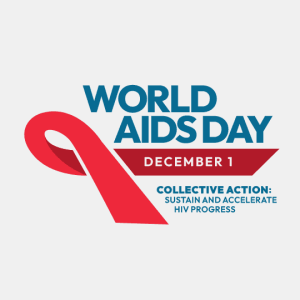World AIDS Day Action Guide for Healthcare Leaders

Key Facts:
- Incidence: 32,100 new HIV infections occurred in the U.S. in 2022, down 12% since 2017 (CDC).
- Screening gap: Only 56% of U.S. adults have ever been tested for HIV; USPSTF recommends at least once for ages 15-65.
- Treatment success: Viral suppression reached 66% of people with diagnosed HIV in 2022; achieving 95-95-95 targets could avert 1.7 million infections globally by 2030 (UNAIDS).
- Equity lens: Black/African American individuals represent 40% of new U.S. diagnoses but 13% of the population.
Editor's Note
This article is part of the BHM Healthcare Awareness Series, designed to provide quick, ready-to-use content and links to official resources for internal staff communications, patient education, and social media.
Feel free to copy, adapt, and share.
Observation Date
December 1
History & Impact
World AIDS Day began in 1988 as the first global health day, spearheaded by the World Health Organization (WHO) and now led by UNAIDS. Each year, governments, NGOs, and health systems unite under a common theme to remember those lost to HIV/AIDS, celebrate progress in prevention and treatment, and reinvigorate the goal of ending the epidemic by 2030 through testing, treatment, and stigma reduction campaigns.
Why it Matters
With more than 1.2 million people in the U.S. living with HIV and an estimated 13 percent unaware of their status, World AIDS Day offers healthcare leaders a strategic moment to drive routine screening, equitable access to antiretroviral therapy (ART), and community partnerships that reduce disparities; key levers for value-based care and quality metrics.
Quick Actions for Your Organization
For Leadership (Strategic)
Embed routine, opt-out HIV screening in EHR order sets for primary care and ED visits; monitor via quality dashboards (e.g., HEDIS HIV-1).
Allocate community-benefit funds to support syringe-service programs and PrEP navigation in high-incidence zip codes.
Join the Ending the HIV Epidemic (EHE) jurisdictional planning coalition to align organizational goals with federal funding streams.
For Implementation Teams (Tactic)
Deploy the UNAIDS digital toolkit (posters, social tiles, and email banners) across intranet, patient portals, and social media from Nov 15 to Dec 15.
Host a same-day “Test & Treat” pop-up clinic offering rapid HIV tests, PrEP counseling, and linkage-to-care appointments.
Create a five-slide CME micro-learning on U = U (Undetectable = Not transmittable) for all clinical staff; track completion in your LMS.
Resources
Ready-to-Use Assets
The following links provide resources & information for creating internal or external campaigns to support or promote this healthcare observance. Please vet these resources for alignment with your organization.
- UNAIDS World AIDS Day Campaign Toolkit – infographics, posters, social graphics
- CDC World AIDS Day
- HIV.gov Events & Social Media Kit – sample tweets, virtual-event tips, hashtag guide
Talking Points
Copy & Paste Friendly
“This World AIDS Day, routine HIV testing saves lives—make it part of every visit.”
“U = U: Effective treatment means people with HIV who achieve viral suppression cannot transmit the virus.”
“Support equitable access to PrEP and ART to end the HIV epidemic by 2030.”
Disclaimer: Please verify all information, usage rights, and related guidelines with the official observance organizers and your organization’s policies to ensure proper alignment.
Frequently Asked Questions (FAQ)
Q1. How do we measure the impact of a World AIDS Day campaign?
Track HIV screening rates, PrEP prescriptions, and new linkage-to-care appointments in the 30 days post-campaign compared with baseline.
Q2. What budget-neutral ways can small systems participate in observing World AIDS Day?
Use free CDC/UNAIDS assets, integrate opt-out testing prompts in existing EMR workflows, and partner with local health departments for mobile testing.
Q3. How can leaders sustain momentum for a World AIDS Day campaign after December 1?
Incorporate HIV metrics into quarterly quality reports, maintain standing PrEP clinics, and schedule quarterly stigma-reduction trainings.
Partner with BHM Healthcare Solutions
With over 20 years in the industry, BHM Healthcare Solutions is committed to providing consulting and review services that help streamline clinical, financial, and operational processes to improve care delivery and organizational performance.
We bring the expertise, strategy, and capacity that healthcare organizations need to navigate today’s challenges – so they can focus on helping others.
Are you ready to make the shift to a more effective process?

